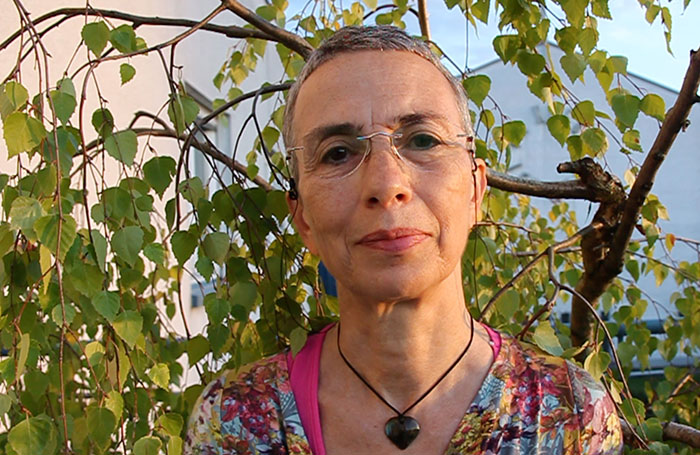EN | DE
The Film
First-hand experiences of Nazi persecution have come down to us in written memoirs and recorded interviews. And they live on in the memories of families, where the perspectives on them change from one generation to the next. The family was Jewish … tells the story of one family of victims and survivors from the late nineteenth century to the present.
The film retraces my growing awareness of the German-Jewish side of my family. As a child, I gradually got to know my relatives, in person and in our photo albums. Later I learned more about them from the Munich municipal archive and the Internet.
Some of our relatives survived Nazi persecution by fleeing to the U.S. There the children grew up, married, and had families of their own. Other branches of the family tree ended in the extermination camps. And there were some who committed suicide even after escaping to safety.
The sensitive technical realization of the 16½-minute film by the graphic artist Sandra Beer (Frankfurt a.M.) and the sound engineer Kathrin Dröppelmann (Berlin) was funded by the Historisches Museum Frankfurt. The film was on view there in the exhibition “The CityLab in Search of Traces Today” from December 2021 to September 2022. It is based on photos, animation, and short video sequences and has a soundtrack with narration and musical elements. It is available in German and English and can be used as a teaching aid.
The film was designed for projection in a cinema or on a screen or wall (mp4, 1920 x 1080 in 16:9).
Family Research Sources
I began research on the German-Jewish side of my family in 2004 because I wanted to find out what had become of my great-grandmother Dorline and my great-aunt Lisl. The two women had remained behind in Munich when my father’s family fled Germany in 1936. I inquired with the municipal archive in Munich and received a wealth of information about them that was new to the family.
In 2018 I learned that, in Munich, you can apply for markers to commemorate the victims of the Shoah in the form of wall plaques or steles. I decided to apply for commemorative steles for Dorline and Lisl.
Not long afterward, I received an invitation from the Historisches Museum Frankfurt to take part in a participatory exhibition called “The CityLab in Search of Traces Today.” I accepted and began preparing a presentation on my German-Jewish family history from today’s perspective. Now I was working on that project—the film on view here—and the applications for the commemorative markers simultaneously. In the course of my research, I realized that other relatives may also have been murdered by the Nazis.
In the Biographical Memorial Book of the Munich Jews 1933–1945 and the Online Memorial Book of the Augsburg Memory Workshop, I learned of several further victims. I contacted the Stolpersteine Initiative for Augsburg and Environs to apply for commemorative markers in Augsburg as well. I received additional information from the Arolsen Archives—International Center on Nazi Persecution, the Facebook page of the Leo Baeck Institute in New York, the Memorial Book of the German Federal Archive, and the General Register Office of the United Kingdom.
EN | DE
Reflection
In her moving family chronicle, Judy Rosenthal introduces—among others—victims of National Socialism as members of her family, as beloved, sorely missed persons, along with their stories. In a special form of first-hand testimony, family histories of this kind can bring individual fates back out of oblivion and make us aware of them in the present as a part of our common past.
Prof. Dr. Ludger van Gisteren
University Professor of Medical Psychology,
Clinical Psychology, and Psychotherapy
Brandenburg Medical School Theodor Fontane
EN | DE
Who I Am
I, Judy Rosenthal, was born in Chicago in 1957 and grew up there. Whereas my mother’s family had been in the U.S. and Canada for a few generations already, my father and his parents and brother—German Jews—had immigrated to the States from Germany in 1936 to flee Nazi persecution.
I studied art history, German, and English in St. Louis and New York. After graduating from college, I had an opportunity to live in Munich—coincidentally, the city my father had come from. I decided to spend one or two years there and get to know Munich, Germany, and Europe.
I still live in Germany today and am meanwhile a proud resident of Frankfurt am Main. I am a dual citizen of the U.S. and Germany, mother of two, and grandmother of one. I work as a free-lance translator (German to English) specializing in art and the history of National Socialism.

EN | DE
Contact
If you have any questions or thoughts about this project, I would be glad to hear from you. Please use this form to contact me:
